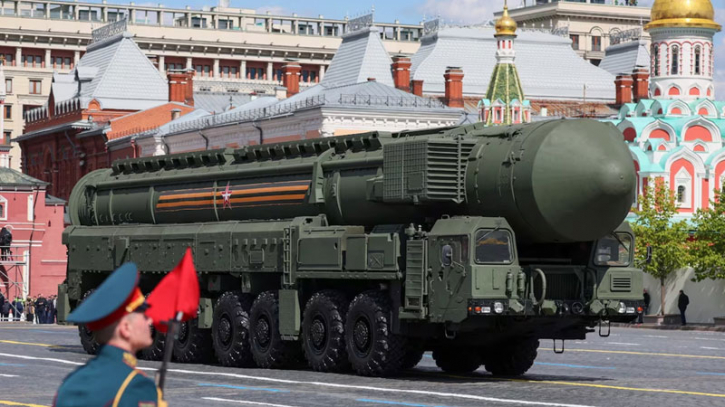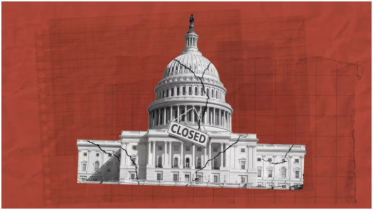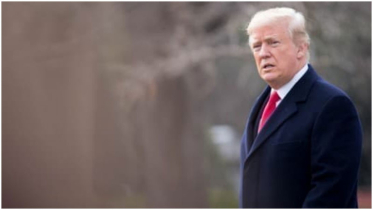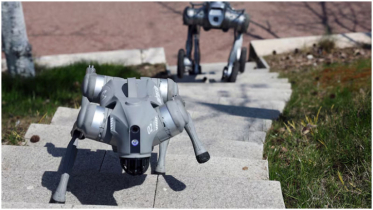Is it conceivable for Russia to use nuclear weapons?

One would like to answer in the negative given the fact that such a move would not only end mankind as we know it, but would also mean the end of Russia itself. There is no reason to believe that the world, regardless of the number of nuclear weapons they possess, would let a madman survive. Yet Vladimir Putin’s remarks, are often misrepresented by learned people whose writings are printed in respected magazines like Foreign Affairs and other publications as well, perhaps on the ground that freedom of expression is guaranteed by democracies throughout the world. I found it interesting to read an article by Peter Schroeder (The Real Russian Nuclear Threat. The West Is Worried About the Wrong Escalation Risks in the December 20, 2023 issue.)
US policy on Russian use of nuclear weapons
The writer quoted at length US President Joe Biden in the following words: “I worry about Putin using tactical nuclear weapons,” US President Joe Biden said in June. The risk, he continued, is “real.” However, officials do not appear to believe that the war in Ukraine could lead Russia to use its nuclear arsenal against a NATO state, however furious it is at the West for supporting Ukraine. That is a mistake. US officials have it backward. It is quite unlikely that Russian President Vladimir Putin will use a nuclear weapon on the battlefield in Ukraine, but he may move toward using one against NATO. Unlike the West, Putin may not fear a nuclear standoff: he is well versed in Russia’s nuclear arsenal and the tenets of nuclear deterrence, and possibly sees himself as uniquely suited to navigating a nuclear crisis.
Russian president on use of nuclear weapons
Vladimir Putin has been remarkably consistent that Russia is willing to use nuclear weapons against NATO to defend its interests in Ukraine. Peter Schroeder added that even eight years ago, in a television interview done a year after Russia invaded Crimea, Russian President Vladimir Putin declared that he had been ready to place Russian nuclear forces on alert to prevent Western forces from interfering in Moscow’s takeover of the peninsula. Russian nuclear weapons use is not imminent. But if Putin does escalate the war, for instance by attacking NATO with conventional weapons, he will likely move very swiftly, so as not to give the United States a chance to maneuver away from a crisis. Washington will struggle to deter a Kremlin so emboldened.
Invasion of Ukraine and Russian nuclear policy
Ukraine is too central to the Kremlin’s ambitions—and too secondary to the United States—for Putin to believe any American threats. Ultimately, Vladimir Putin will expect the United States to back down before fighting a nuclear conflict over land so far from home. Do people believe that such an eventuality can happen in a world that has become so complex and so interdependent with phrases like “de-risking” and “de-globalization” and many other phrases being taught in schools from primary levels.
Russian suspension of New Start treaty
In his long article Peter Schroeder wrote that in February 2023, Russia suspended participation in the New START treaty, which regulated how many nuclear weapons Moscow and Washington could have. In March, the Kremlin announced that it would move some of its nuclear weapons into Belarus. In October of that year, Vladimir Putin suggested that Russia might restart nuclear testing. All the while, Russian government officials have threatened to launch a nuclear attack, as former President Dmitriy Medvedev did in July when he said Russia could “use nuclear weapons” to conclude the Ukraine war in a few days. US officials, of course, have paid attention to these threats, but they have not been convinced by them. They imagined that Moscow may use small so-called tactical nuclear weapons on the battlefield, but not large so-called strategic ones against NATO states.
The US is hopeful that Russia will not use nuclear weapons
According to National Security Advisor, Jake Sullivan US experts in recent days thought that there was little fear that Russia would use strategic nuclear weapons in Ukraine or against the West, but some remained concerned that Russia could use tactical weapons. Putin, their thinking went might use these weapons to help Russian forces halt a Ukrainian attack that appeared on the verge of taking back Crimea or inflicting a significant defeat that threatened to push Russian forces out of eastern Ukraine. However, the growing complacency among US officials is based on a misunderstanding of Putin’s rhetoric and the dynamics that keep Moscow from using nuclear weapons. When Putin invokes his arsenal, he is not trying to warn that Russia could use tactical nuclear weapons in Ukraine. Rather, his rhetoric is designed to threaten NATO itself. It is a blinking red light, a warning to American decision-makers that Moscow is willing to create a nuclear confrontation with Washington if needed to win in Ukraine. So long as Putin remains optimistic about Russia’s odds, he is unlikely to rock the boat in Ukraine. Tactical nuclear weapons would do little to help Russia break the stalemate. Ukrainian forces are well entrenched along a frontline that extends for roughly 600 miles, and so even dozens of tactical weapons would not be enough to let Russia push through. Even if they were, Russia does not have the maneuverable reserve forces needed to exploit any opening created by these weapons.
Chatham House weighs in on Russian nuclear policy
Peter Schroeder’s thesis was countered by Valeria Akimenko, Senior Research Analyst, Conflict Studies Research Centre of Chatham House explaining the myth of the use of Russian nuclear weapons and wrote that the circumstances under which Russia might use nuclear weapons have been the subject of lengthy and heated debate. This is in part because of mixed messages from Russia itself. Published nuclear doctrine describes a very limited set of circumstances predicting a nuclear response by Russia. But this is at odds with consistent public rhetoric from President Vladimir Putin down through the entire information apparatus of the Russian state, which has frequently made both implicit and explicit Russia’s nuclear rhetoric being incessant and emphasized readiness to use these weapons. But it aims to extract the maximum possible practical value from their mere possession, with or without actual intent to use. The impact of these threats builds on an intensive and highly effective program by Russia’s extended network of influencers abroad promising almost inevitable escalation to nuclear war if Russia’s plans are opposed. While the constant Russian nuclear refrain suggests a greater willingness to consider nuclear use in real life, in turn, based on Russia’s demonstrated greater willingness to inflict mass destruction and mass casualties in pursuit of its aims, the rationale behind these threats is to increase Russia’s operational latitude without actually having to go to war, by undermining Western will to resist. This campaign has been effective in creating an impression that Russia has an exceptionally low threshold for nuclear use and that a wide range of circumstances or “provocations” could cause that threshold to be crossed.
Russian military doctrine provides first use of nuclear weapons in conventional war
Russian nuclear doctrine provides for nuclear first use in a conventional war when the country’s “very existence” is at risk. But this has not prevented a wide range of risks in any war, even one started by Russia, being described as existential. It is argued that there need not even be a war. International sanctions and even “aggressive” statements by Russia’s “enemies” have repeatedly proved sufficient to trigger renewed nuclear threats. Western political leaders have themselves confirmed that Russia has succeeded in shaping their behavior through nuclear intimidation. A wide range of experienced analysts outside Russia hold the opinion that Russia’s nuclear weapons would only actually be used in extremis. This view holds that Russia’s nuclear arms are a political, defensive deterrent, and thus unlikely to be employed. It further suggests that advances in Russia’s conventional capabilities have made it less likely to need to resort to the use of nuclear weapons. The debate is further complicated by the layering of Russia’s nuclear capabilities, from non-strategic to strategic weapons. The contributions of Russian commentators on the nuclear policy should be treated with skepticism, but in many cases, they too have played down the likelihood of nuclear use. The arms control specialist Nikolai Sokov holds that Russia’s nuclear doctrine is defensive and that it reserves nuclear use “exclusively for situations when Russia is attacked,” albeit in a broader range of circumstances than the widely recognized criterion of an attack “which threatens the existence of the state itself.”
Limited nuclear war is “alien” to Russian strategy
Meanwhile, the former Russian military intelligence officer and Carnegie Moscow analyst Dmitri Trenin has argued that the notion of a limited nuclear war has always been “alien” to Russian strategy. Informed analysts outside Russia have also noted a trend for the threshold for Russian nuclear use to become higher, not lower, as Moscow’s conventional military capabilities have improved from their nadir in the 2000s. Kristin Ven Bruusgaard observed that “Russia today is less, not more likely to use nuclear weapons than it was 10 or 15 years ago.” Olga Oliker has also argued there is little evidence Russia has lowered its threshold for nuclear use. Disagreements over the precise threshold for Russia to use nuclear weapons risk obscuring the key point that that threshold is far lower than for Western nuclear powers. The moral dimension of nuclear use is also far less of a constraint for Russia than for democracies, as is also the case with other actions in Russia’s conduct of war that cause revulsion abroad – most recently highlighted in Ukraine. Russia also continues to upgrade its nuclear command and control systems, regarded as a vital second-strike and warfighting capability. Moreover, while Russia’s nuclear doctrine posits its nuclear weapons as ‘exclusively’ a deterrent, it also sets out specific criteria for their employment. Each of these criteria allows for nuclear first use in circumstances that no Western leader “would even consider.”
Russia shifts to policy of first use nuclear weapons
Russia’s shifting first-use posture in the late 1990s and into the 2000s -- a pivot from “no first use” to “first use if necessary” to “assured first use if Russia’s survival is at stake” -- demonstrates its reliance on a nuclear arsenal for both deterrent and warfighting purposes. The risks of miscalculation, meanwhile, have been strongly emphasized by Russia in its campaign of intimidation but do nevertheless exist. However, while all of these factors demonstrate that Russia’s attitude to nuclear use is significantly different from that of a NATO nuclear power, this attitude does not set preconditions for reckless, pointless or suicidal nuclear attacks in response to marginal threats. While Russia’s attitude to nuclear use is significantly different from that of a NATO nuclear power, this attitude does not set preconditions for reckless, pointless or suicidal nuclear attacks in response to marginal threats. As noted above, the most direct and obvious success of Russia’s nuclear threats is in constraining Western support for Ukraine. But Russia capitalizes far more broadly on the perception that it must not be impeded, offended or, most of all, defeated. This means there are few credible options for responding in the event of Russian use of non-strategic nuclear weapons (NSNWs), which in turn enhances their intimidatory power. In other words, the threat of massive US retaliation alone is inadequate if Western nuclear deterrence is to remain credible.
Chatham House advises restraint to the West in dealing with Russian nuclear threats
Valeryia Akimenko concludes by saying that good policy means responding soberly to Russian nuclear threats, while at the same time ensuring that any actual nuclear use cannot go unanswered. Russia has weaponized nuclear rhetoric to great effect, evident in the near-panic that ensues every time President Putin mentions the possibility of nuclear use. The international community should recognize that this is a routine element of Russian state communications and should take a long view in assessing such propaganda rather than reacting to each new occasion when it is employed. Consistent long-term policy is called for instead. To close the deterrence gap, NATO must re-examine and re-emphasize its nuclear deterrent in such a way as to address the threat, however remote, of low-yield nuclear weapons being employed for limited military objectives and localized effect. It must better calibrate its capabilities to the developments in Russia’s arsenal, and address the gaps in NATO’s escalatory ladder that have formed as a result. Conventional and nuclear, defensive and offensive, symmetrical and asymmetrical military countermeasures must be demonstratively available for use for maximum effect in deterring any consideration of nuclear use by Russia. The gulf in non-strategic nuclear capability demands policy adjustment, beyond the step already taken to fit several low-yield warheads to strategic submarine-launched ballistic missiles. Cheaper and more credible delivery platforms, distinguishable from those designed for a strategic nuclear strike, are essential. This is not to argue for a full-on nuclear arms race. Rather, it is essential to signal resolve, which is often lacking, as well as to demonstrate potential, which at the moment is also absent. Defensive action against the use of NSNWs, such as the hardening of high-value targets, must be considered. A coordinated division of labor is necessary both within NATO and more broadly. NATO’s non-nuclear member states and other like-minded non-nuclear nations must also contribute towards advanced conventional deterrent capabilities, including missile defense and a full range of stand-off fires. The Kremlin should not retain its monopoly on public discussion of nuclear use, and nuclear threats must be responded to rather than with panic. Russia should be challenged directly over its own toxic and irresponsible domestic and international nuclear statements. Above all, situations that would warrant a limited nuclear response by Western nuclear powers, such as Russian use of NSNWs or other weapons of mass destruction, should be discussed publicly to reduce Russia’s confidence in Western self-deterrence. All of these measures would render Russia’s nuclear threats even less realistic, and hence a less effective tool for intimidation. (Publication date: August 23, 2022).
Given the above information on Russian nuclear weapons and her policy on the use of nuclear weapons we the people of the world would like to be hopeful for the continued prosperity of mankind. The rise of China, albeit a wrinkle in global politics, is expected to contribute to the development of mankind. One hopes that the “limitless friendship” between Russia and China will not be able to stand in the way of the progress of democratic people regardless of the opposition by the Sino-Russian entente. Many developing countries would indeed be attracted by China’s Bridges and Road (BRI) initiative aimed at developing the infrastructures of these countries that have the need but not the resources. China’s BRI initiative is attractive to developing countries because China does not impose any restrictions on the loans given to these countries. But BRI projects have been publicly criticized by the Americans in particular dubbing the initiative as Debt Trap. Such accusations, however, do not touch Russia or its policy on nuclear weapons.
Writer: Kazi Anwarul Masud, diplomat and ex-ambassador.
Source: Dhaka Tribune
.png)




